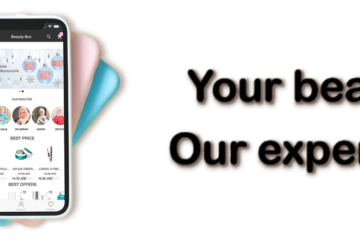Binary to Text Converter: Unveiling the Magic Behind the Conversion Process

Binary To Text Converter
In the digital age, the binary to text converter emerges as an essential tool, bridging the gap between the binary code that computers understand and the text that humans can read and interpret. This article delves into the intricacies of binary to text conversion, exploring its significance, the underlying technology, and its applications across various domains.
The Significance of Binary to Text Conversion
Binary code, the most fundamental language of computers, consists of only two digits – 0 and 1. These digits, or bits, represent the off and on states of a computer’s electrical switches. Despite its simplicity, binary code forms the backbone of all computer operations, from basic arithmetic to complex computing tasks.
However, binary code is not intuitive for human understanding or communication. This is where binary to text converters come into play. They transform binary code into alphanumeric characters, making it possible for humans to interact with and understand the data processed by computers.
Understanding the Conversion Process
The conversion process from binary to text is based on binary code’s representation of the ASCII (American Standard Code for Information Interchange) or Unicode system. ASCII is a character encoding standard that assigns a unique binary number to each letter, digit, and symbol. For example, the ASCII code for the letter ‘A’ is 01000001 in binary.
The ASCII System
The ASCII system encompasses 128 unique character codes, covering uppercase and lowercase letters, digits, punctuation marks, and control characters. It operates on 7 bits, allowing for 2^7 (128) possible combinations. This sufficiency for basic English text led to its widespread adoption in early computer systems.
Unicode: Beyond ASCII
With the globalization of computer use, the ASCII system’s limitations became apparent, especially for languages with large character sets. Unicode was developed to address this, providing a comprehensive standard that includes every character from all the world’s writing systems. Unicode uses varying bit lengths, from 8-bit (UTF-8) to 32-bit (UTF-32), to accommodate its extensive character set.
The Conversion Algorithm
The conversion from binary to text involves several steps, typically starting with the segmentation of the binary string into chunks corresponding to the encoding system’s bit length. For ASCII, the binary string is divided into 7 or 8-bit segments, each representing a character.
- Segmentation: Divide the binary string into 7 or 8-bit segments (for ASCII or extended ASCII).
- Conversion: Convert each binary segment into its decimal equivalent.
- Mapping: Map each decimal value to its corresponding character in the ASCII or Unicode system.
- Output: Combine the characters to form the final text.
Tools and Software
Various tools and software implementations automate the binary to text conversion process, ranging from simple online converters to sophisticated programming libraries. These tools typically allow users to input binary data and output the corresponding text, streamlining the conversion process.
Applications of Binary to Text Conversion
Binary to text conversion finds applications in various fields, reflecting the omnipresence of binary data in digital technologies.
Data Encoding and Communication
In data communication, binary to text conversion facilitates the transmission of binary data over text-based protocols, such as email or XML files. Encoding binary data as text, using Base64 encoding for example, ensures compatibility across diverse systems and protocols.
Programming and Development
Developers often use binary to text conversion to debug binary data, visualize binary file contents, or embed binary resources in source code. This conversion makes the data more accessible and interpretable, aiding in development and troubleshooting processes.
Cryptography
In cryptography, binary to text conversion is used to represent binary cryptographic keys or hashes in a human-readable format. This facilitates the sharing, storage, and comparison of cryptographic data.
Education and Learning
Educational platforms and tools leverage binary to text conversion to teach binary arithmetic, computer science fundamentals, and data encoding principles. By visualizing the conversion process, learners gain a deeper understanding of how computers process and represent information.
Conclusion
The binary to text converter serves as a critical bridge between the binary world of computers and the textual world of human language. By translating binary data into readable text, it enables seamless interaction with digital technologies, enhances our understanding of computer operations, and facilitates diverse applications across fields. As digital technologies continue to evolve, the role of binary to text conversion remains indispensable, underlying the continuous dialogue between humans and machines.
Leave a reply
You must be logged in to post a comment.











